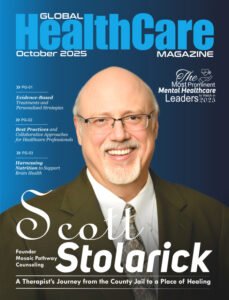Recently, Spruce Biosciences Inc. (SPRB) has brought global attention to the company’s success following the U.S. FDA’s breakthrough designation for its new treatment. The SPRB’s Market surge brought attention for its investigational enzyme replacement therapy (TA-ERT) with over 250% in a single day.
This movement brings to the urgent need to fund and support medical innovations for some of the world’s Ultra-Rare Disease Therapies. It symbolises both hope and challenge for the rare disease community, showing why developing therapies for small patient groups is medically crucial, scientifically complex, and financially demanding.
1. SPRB’s Market Surge & Promise of Sanfilippo B Therapy
The investigational enzyme replacement therapy (TA-ERT) of Spruce Biosciences (NASDAQ: SPRB) targets Sanfilippo Syndrome Type B. It is a devastating genetic disorder that leads to progressive neurological decline in children.
Key Highlights:
- FDA recognition validates the potential of TA-ERT to slow or prevent brain damage in children with Sanfilippo B.
- The therapy represents one of the few promising candidates addressing this condition at its root cause.
- The SPRB’s Market surge underscores growing investor awareness about rare disease research potential.
2. Why Ultra-Rare Disease Therapies Matter
For decades, ultra-rare diseases, those affecting fewer than 1 in 50,000 people, have received limited research funding and public attention. SPRB’s market surge rally reflects a shift in this mindset, showing that even small patient populations deserve scientific innovation.
Medical Importance:
- Unmet need: Over 95% of rare diseases have no approved treatment.
- Scientific value: Insights from rare genetic disorders often guide discoveries in more common diseases.
- Human impact: Families affected by conditions like Sanfilippo B rely on biotech breakthroughs for survival and quality of life.
According to Dr Susan Reynolds, a biotech analyst at BioFinance Group, “When a therapy like TA-ERT advances, it’s not just a win for one company, it’s a step forward for an entire medical field often overlooked by traditional funding.”
3. Funding Fragility in Biotech
Behind the excitement of SPRB’s Market Surge lies a difficult reality of funding the development of therapies for ultra-rare diseases remains a major challenge. Despite receiving regulatory support, companies like Spruce often operate with limited cash reserves. Spruce reportedly holds around $16 million, enough to sustain operations for less than a year at current spending levels.
Financial Barriers:
- Limited patient base: Ultra-rare conditions have small commercial markets.
- High development costs: Research, manufacturing, and multi-phase clinical trials are costly.
- Market volatility: Stock Market gains of SPRB can fade quickly without sustained investor confidence.
4. The Balance Between Science & Sustainability
The rise of SPRB’s Stock Market brings to light an essential dilemma of how to balance medical innovation with financial sustainability.
Key Considerations:
- Ethical responsibility: Biotech firms feel compelled to pursue therapies for small patient groups, even if the financial reward is uncertain.
- Investor hesitation: Many funds prefer predictable returns, which ultra-rare disease R&D cannot guarantee.
- Long-term vision: Building trust in SPRB’s stocks depends on transparent progress, partnerships, and patient-focused strategies.
5. Lessons From SPRB’s Market Performance
The biotech industry has seen similar surges before. The dramatic stock jumps following FDA announcements, followed by equally sharp declines when funding gaps or clinical delays appear.
Investor Takeaways:
- Optimism vs. Reality: This growth of SPRB shows confidence, not completion.
- Patience matters: Rare disease programs can take years to move from early trials to approval.
- Diversification: Institutional investors are now spreading their portfolios across multiple biotechs to balance risk.
Analysts emphasise that SPRB’s stock market trajectory should be viewed as a long-term indicator of biotech innovation, not a short-term financial trend.
6. Ultra-Rare Therapies as Catalysts for Broader Scientific Discovery
Beyond market movement, SPRB’s market surge reflects the growing scientific relevance of rare disease research. Studies on genetic conditions like Sanfilippo Syndrome often unlock pathways that can lead to treatments for more common neurological disorders.
Broader Implications:
- Gene and enzyme therapies developed for rare diseases have laid the foundations for Alzheimer’s, Parkinson’s, and ALS research.
- Innovations in delivery systems, biomarkers, and regulatory fast-tracks benefit the wider healthcare ecosystem.
- As SPRB’s market surge continues, it signals not just investor interest but scientific collaboration across therapeutic fields.
7. Future of Ultra-Rare Disease Research
To ensure progress continues, experts advocate for diversified funding approaches that align scientific value with economic viability:
- Public–private partnerships to share R&D risks.
- Outcome-based investments tied to measurable scientific progress.
- Patient advocacy funding, allowing affected communities to co-invest in research.
Each of these models can help sustain momentum behind companies like Spruce, whose SPRB’s market surge represents both financial faith and societal responsibility.
Conclusion
The ascent of Spruce Biosciences is a reminder that every data point represents real human lives waiting for hope.
As ultra-rare disease therapies advance, they redefine the boundaries of modern medicine, proving that no condition is too uncommon to matter. Yet, without adequate funding, many of these breakthroughs may never reach the patients who need them most.
Ultimately, this SPRS movement stands as both a signal of medical progress and a call to action to invest not just in stocks, but in the science that saves lives.


















